FiiO Q15 Portable DAC AMP – Sweet Sounding Dynamics Master
FiiO Q15 is a $399 USD portable DAC or Digital To Analog Converter, and Headphone Amplifier, with two headphone outputs, a smartphone mode, and with a huge driving power, but low noise for IEMs. Today we will review it and compare the new high-performance FiiO unit to other similarly priced mid range DAC/AMPs, including Shanling H5 (369 USD), iFi Audio Go Bar (329 USD), FiiO Q5S (350 USD), and Palab M1 Mini (500 USD).
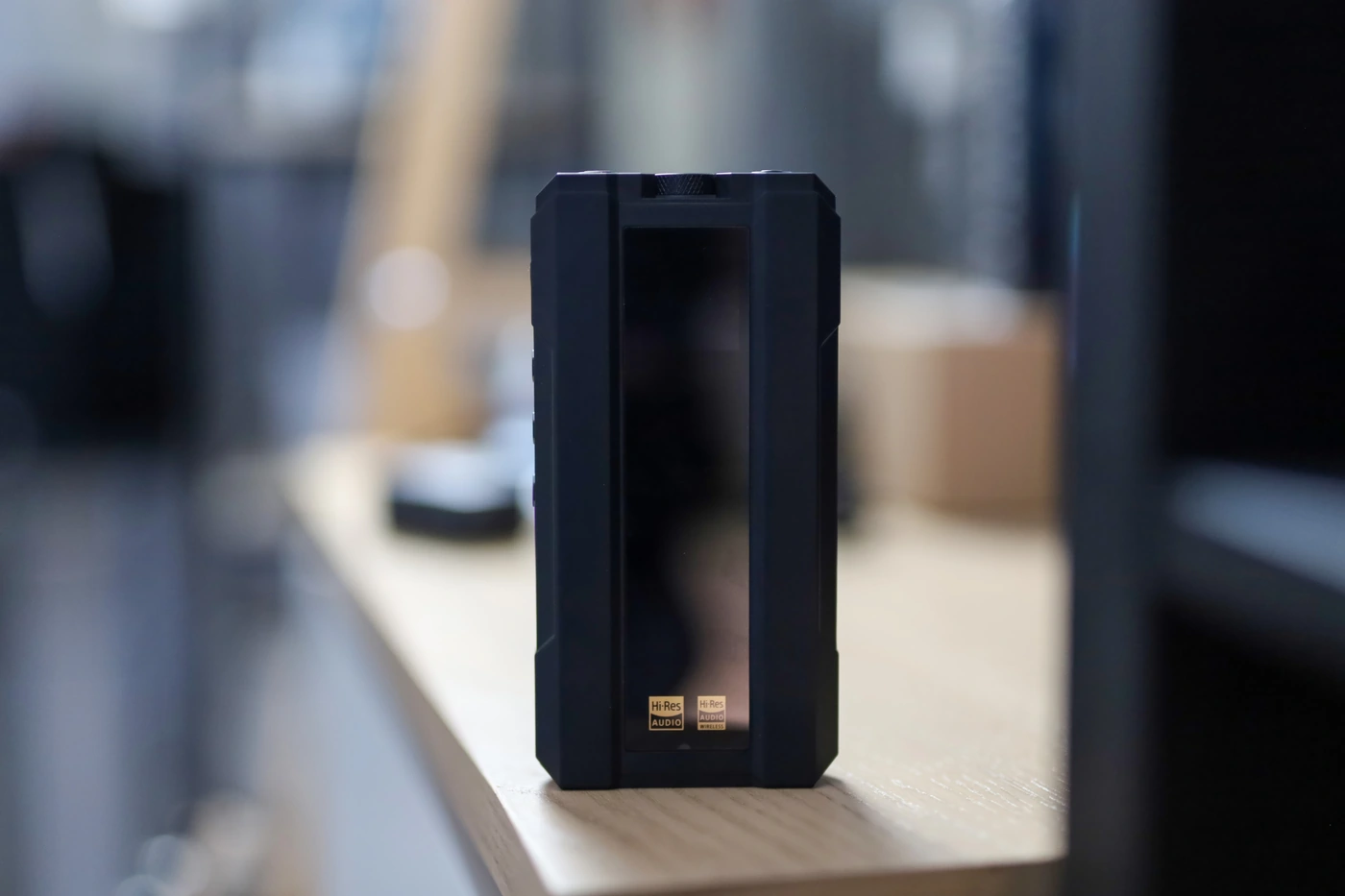
Introduction
FiiO really wanted to give you the option to pick just how much power and drive you need from a Bluetooth device, so they created a series of products, which started with FiiO BR13, FiiO BTR15, and now FiiO Q15 to empower every single music lover to get the best sound and presentation they may need. The Q15 we’re reviewing today sits as one of the best sounding Bluetooth receivers with one of the highest driving powers, and exceptional features, and is available worldwide through most sale channels for audio. As an Amazon Influencer, I earn from qualifying purchases, and using the purchase links in my reviews helps me maintain this website and YouTube channel.
I’d like to thank FiiO for providing the sample for this review, in exchange for my honest opinion. This review is a description of my personal experience.
Product Link
You can grab one from www.amazon.com here – https://amzn.to/4bOWj9m
If you’re in the UK, you can grab one from www.amazon.co.uk here – https://amzn.to/4bJufnY
And if you’re from Europe, you can grab one from www.amazon.de here – https://amzn.to/4bGg8jr
Build Quality/Aesthetics
With a new unit comes a new design, and whilst FiiO still made the Q15 look somewhat industrial, it feels far more like a proper high-end unit than the older FiiO Q5s did, and although we now don’t have replaceable AMPs anymore, as we will explore, that won’t be missed, as the AMP inside of Q15 outplays the one in Q5s by a serious margin. We have a Type-C USB connector, and two headphone outputs, one in the now popular 4.4mm Balanced Format, and one in the 3.5mm Single Ended format. FiiO Q15 has a glass back, which is protected from both fingerprints and scratches, and it has a 18:9 ratio, being ideal to stack with most smartphones.
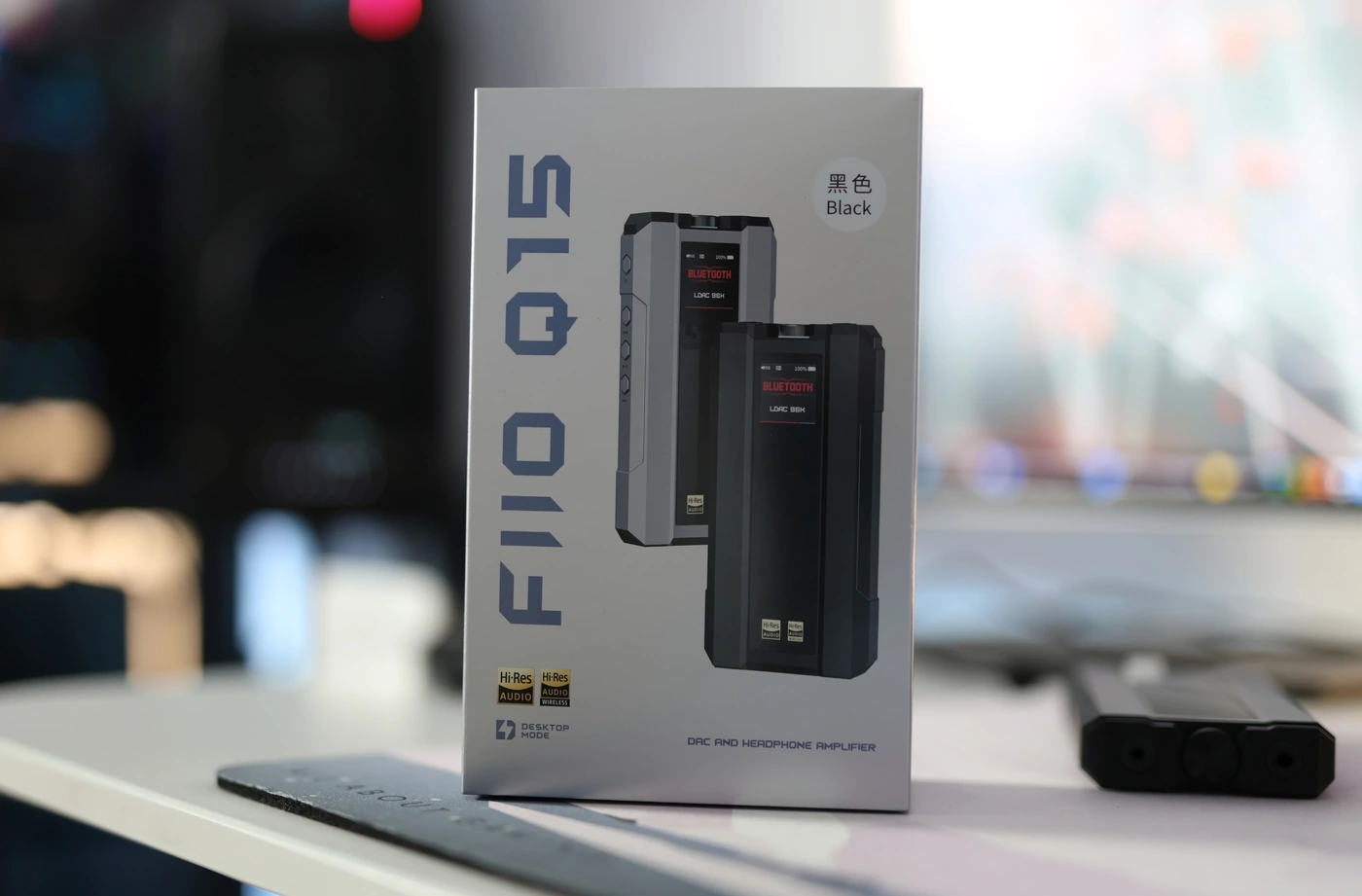
Startin with what Q15 is exactly, this is a DAC / AMP with desktop grade performance, but made to be portable. This means that it will easily overtake the FiiO K11 in overall sonic performance and clarity, but still be powered from the battery inside. To make sure that this portability aspect goes hand in hand with the desktop aspect, FiiO Q15 has two separate Type-C inputs, one for USB Signal, which allows you to feed it data, and one for power. If you do connect a cable to the power only input, the Type-C port for data will not take in power, and Q15 will be powered entirely external, bypassing the internal batteries, allowing you to use it for years as a DAC/AMP for desktop without damaging the internal battery. This has been a problem in the past, with devices such as Chord Mojo having a short usable lifetime of about a year or two before the internal battery dies from overcharge cycles, so FiiO is clever to solve this issue. There is a Phone mode too, which makes Q15 drain only its own internal battery, to lengthen the listening time you get from your smartphone. There is protection for overheating, over voltage, overcharge, DC protection.
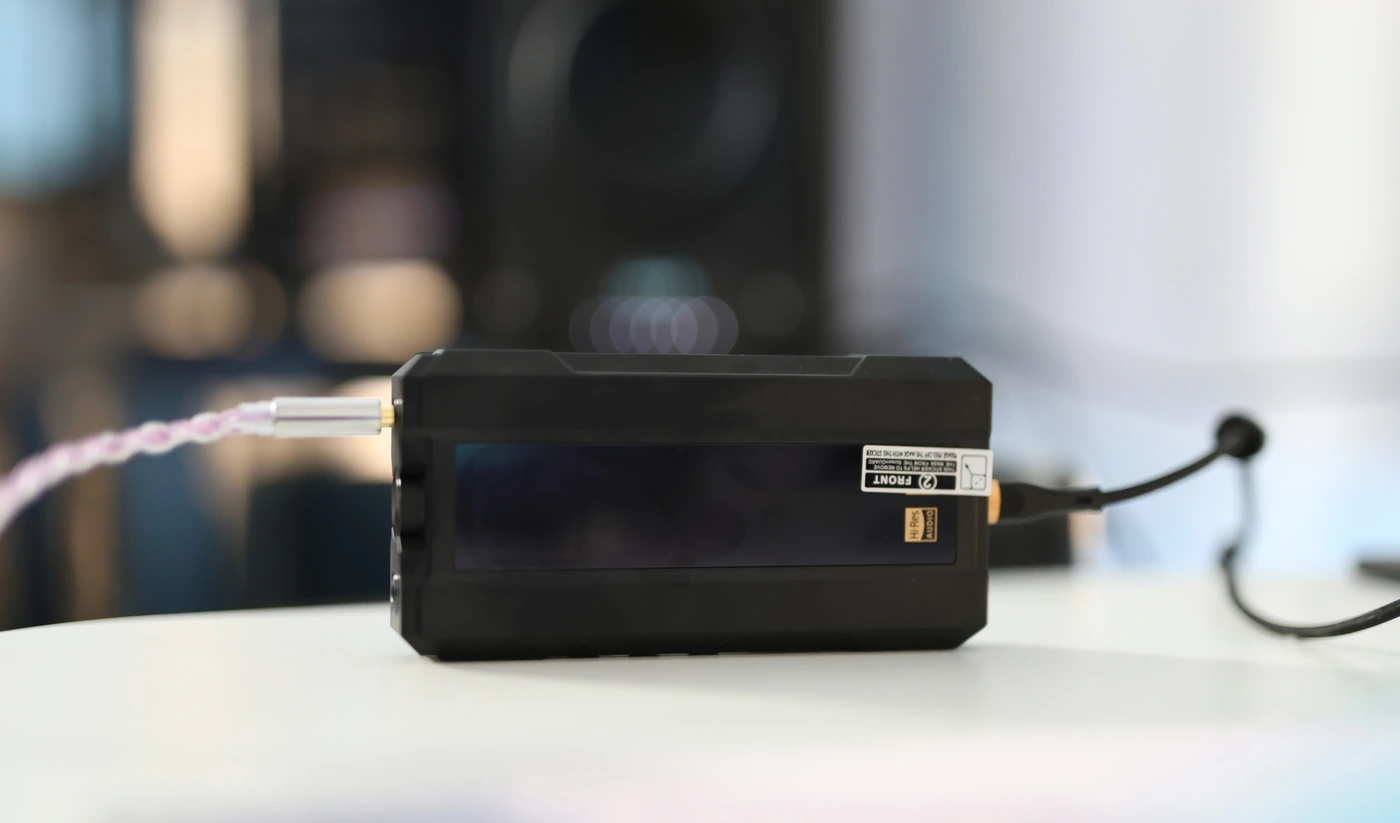
If you’re a power addict like me, you will love to know that FiiO Q15 can output up to 1600mW of power when put in Desktop Mode and over the balanced output. That power is per channel, so we have at max 1600mW per channel, for a 32 OHM impedance, which is 3200mW of power in total, with a THD of lower than 1%. In fact, all the power levels are quoted for a THD of <1%, and for the single ended we have 620 mW per channel for a 32 OHM impedance, and 85mW per channel for a 300 OHM impedance. The balanced output has 340mW per channel for a 300 OHM impedance, basically more than you could ever dream of using, even with Sennheiser HD 660S2. Still speaking of power, FiiO Q15 comes with a high capacity battery, 5500mAh, which is a high-temperature resistant unit with Li-Ion technology. The battery will give you about 9 hours of battery in the smartphone mode, around 8 in smartphone mode, both if using normal gain, and around 7 if using high gain levels. With Q15 I never felt the need for high gain, as even at low gain, I can’t reach max volume with most headphones.
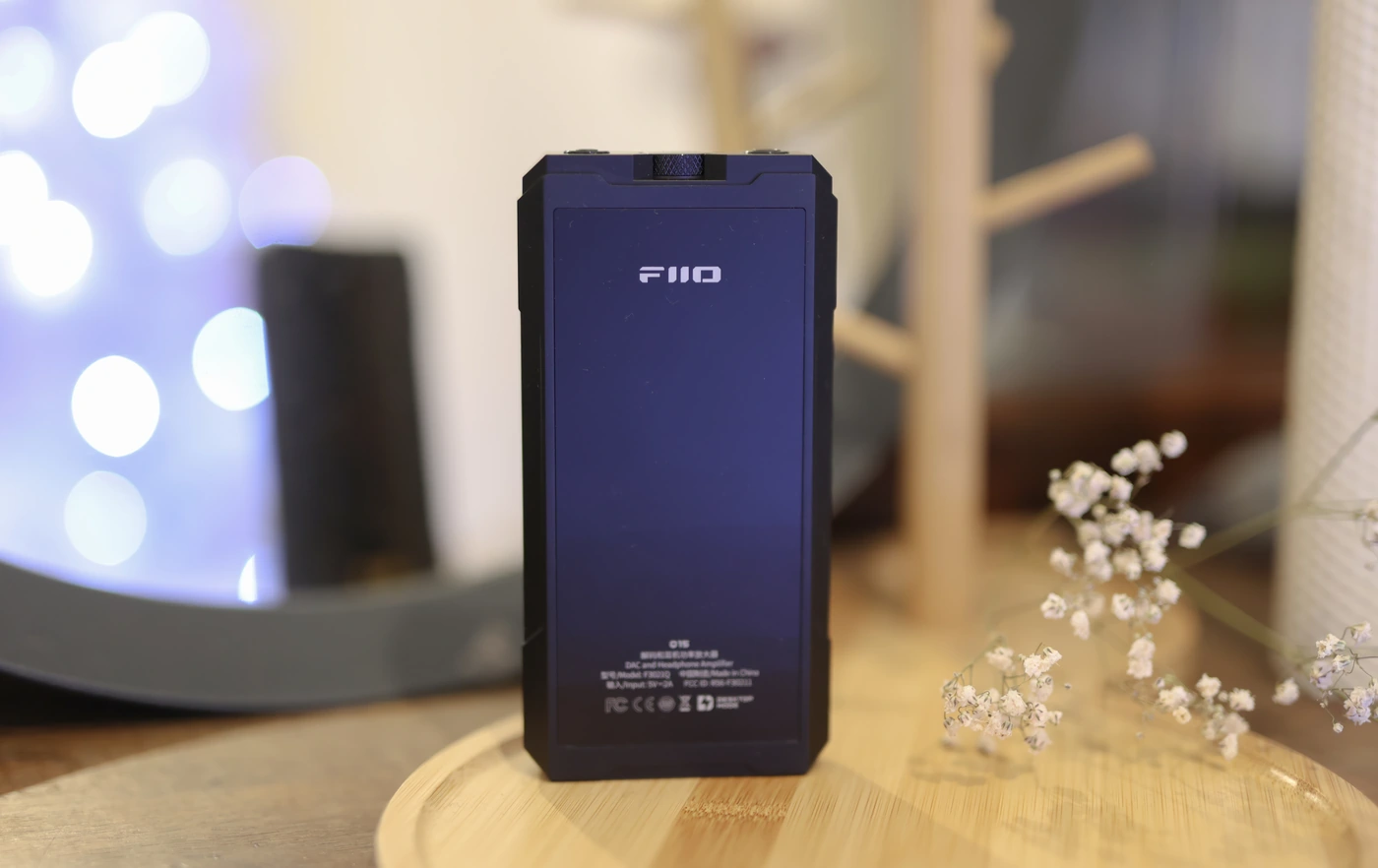
To use FiiO Q15 as a USB DAC, you have support for up to 32 Bit / 768 kHz, as well as DSD512. FiiO also included Bluetooth support, with LDAC and aptX Adaptive as the highlights of the BT input, and there is a Coaxial input, with up to 192 kHz and 24 Bits support. This is all provided by the high-end XMOS XU316 USB Module, which even supports Full MQA Decoding, and we have a TI Cortex M4 processor for the DSP processing. We also have the high-quality Qualcomm QCC5125 chip for Bluetooth support. The digital and the analog boards of Q15 are independent and shielded against each other, to make sure you get the least crosstalk and interference possible.
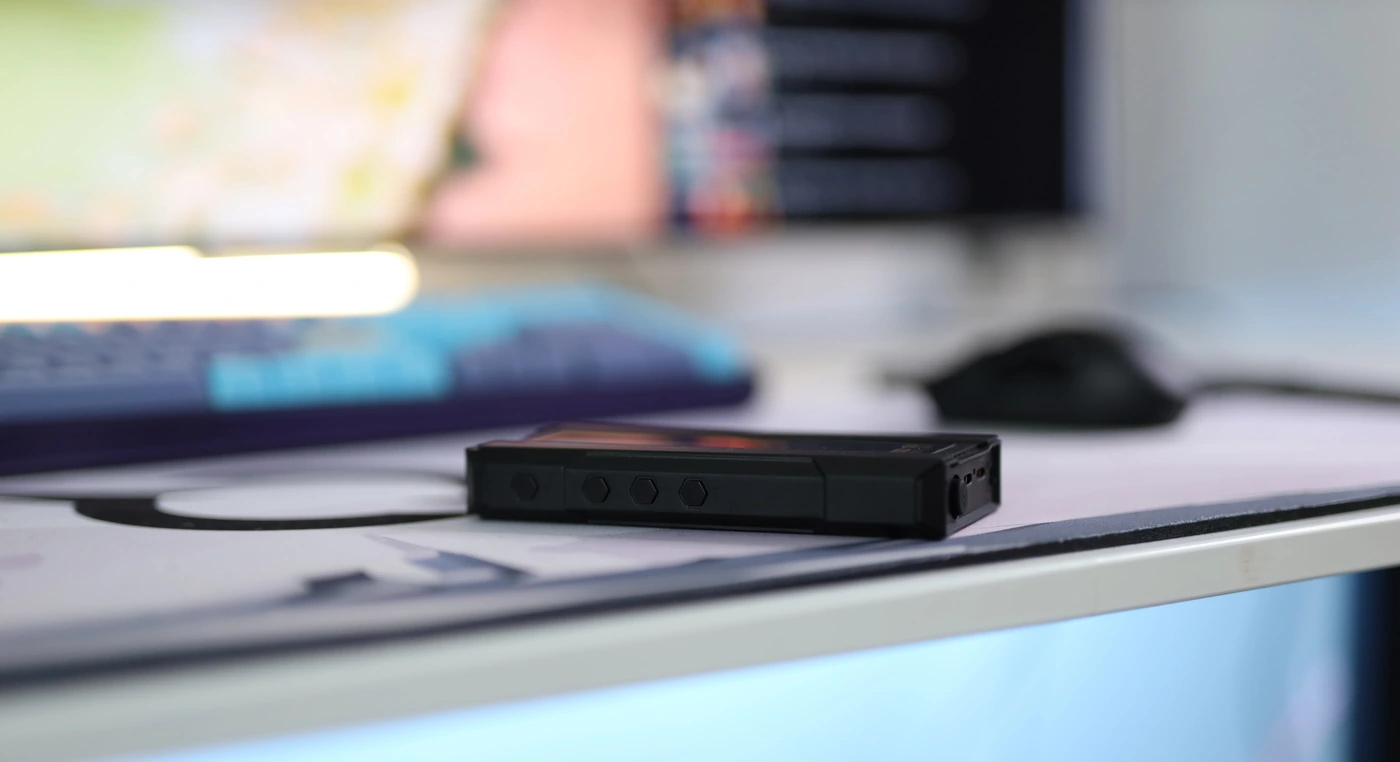
There is a little Full Color IPS Display at the front to let you browse the settings, see the current data rate, current battery life, and what input you’re using, as well as the volume and gain levels. The display is tiny, 1.3″ in size, and has a fair resolution of 240×240 pixels. All control is done using the volume wheel and the power button, which turns the display on and off, although pressing the volume wheel does the same thing. You can change the display orientation to better suit your usage, and the volume wheel is a digital controller with clear clicks for each volume step. There are 7 filters available and you can set Q15 to turn off automatically after a set period of time.
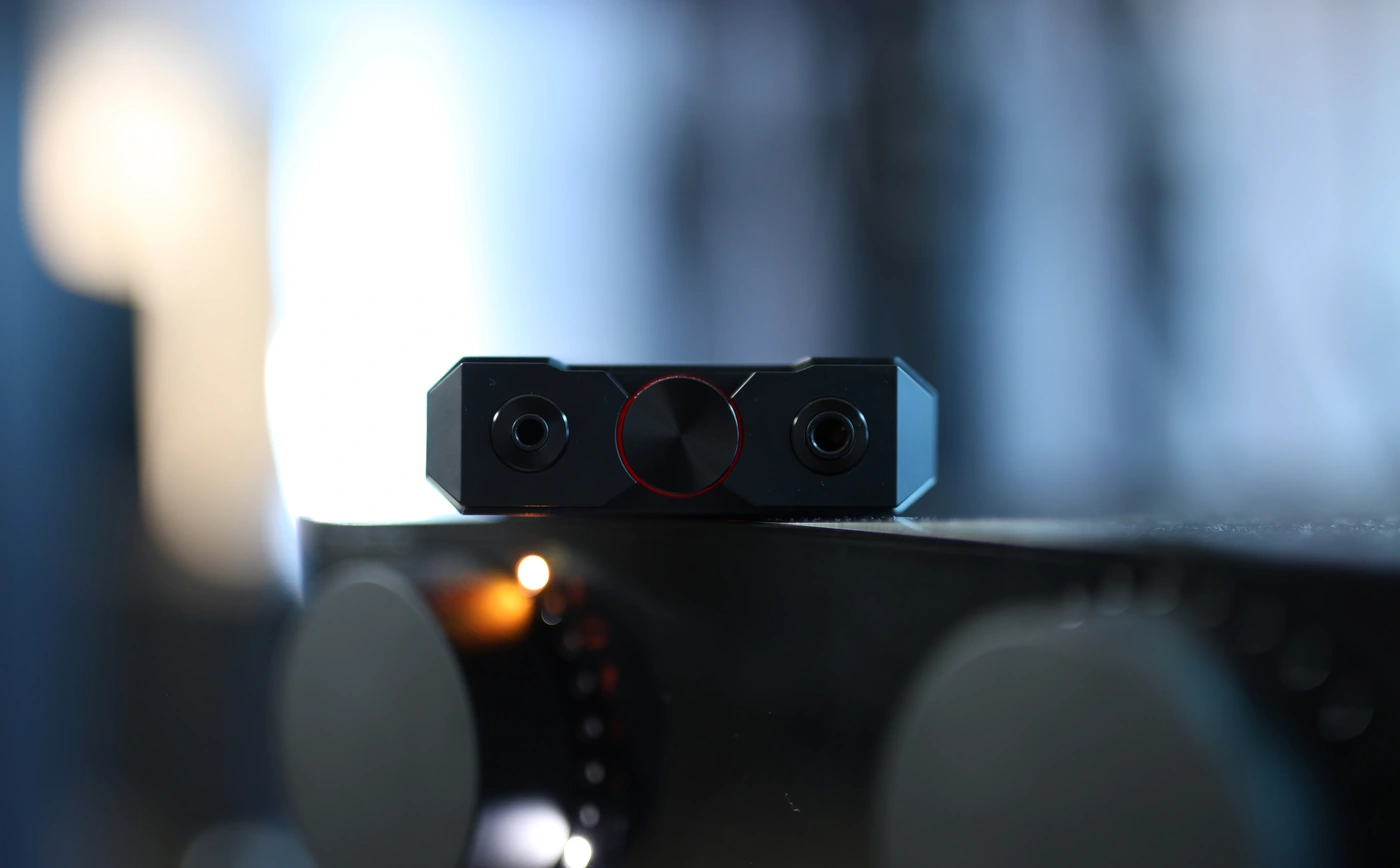
The internal DAC is a combination of an AK4191 + AK4499EX, offering the sound we will explore with Q15 down in the sound quality part of the review.FiiO implemented 5 Gain Levels, and a 15-way digital-analog power supply in Q15, to make sure you’re safe from noise. The DAC can offer a SNR higher than 123dB, a THD of lower than 0.0004%, and the Balanced output has a noise lower than 4.8uV. The two DACs are running with the new DWA Routing technology, and those parameters are actually measured during tests, not the quoted data from the DAC specification page. The output impedance is <1.5 OHMs, and with most IEMs you won’t hear hissing or background noise, although with Campfire Ara, there is some audible hissing.
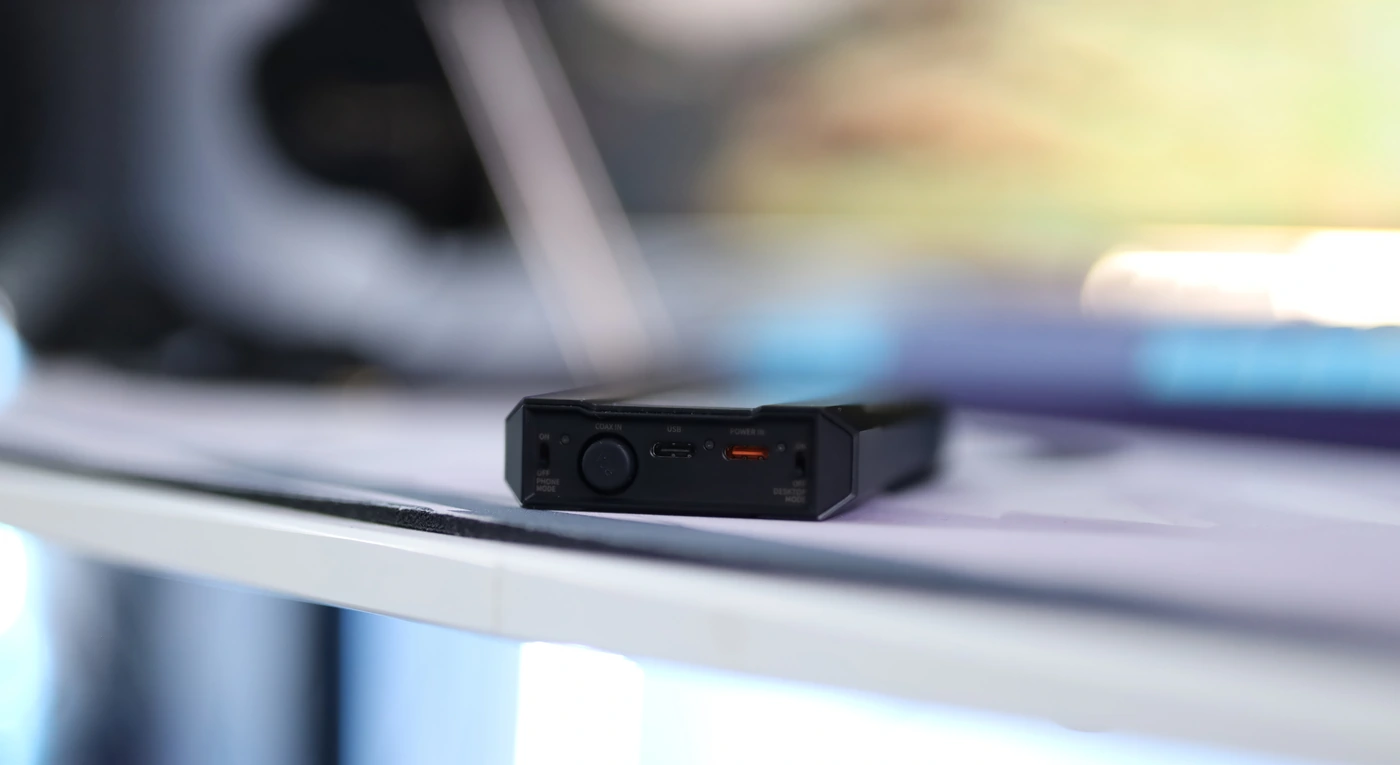
We have Global PEQ or Parametric Equalizer, which comes with 7 Presets, and 3 customisable PEQ Presets. Those can be used in both Bluetooth mode and even USB DAC modes, although if using PEQ, the USB DAC mode will be limited to 192 kHz / 24 Bit signals. There is a fiiO App through which you configure all things, but for Windows you don’t need an app or driver for Q15 to work, and it works natively, is detected and supported on my PC.
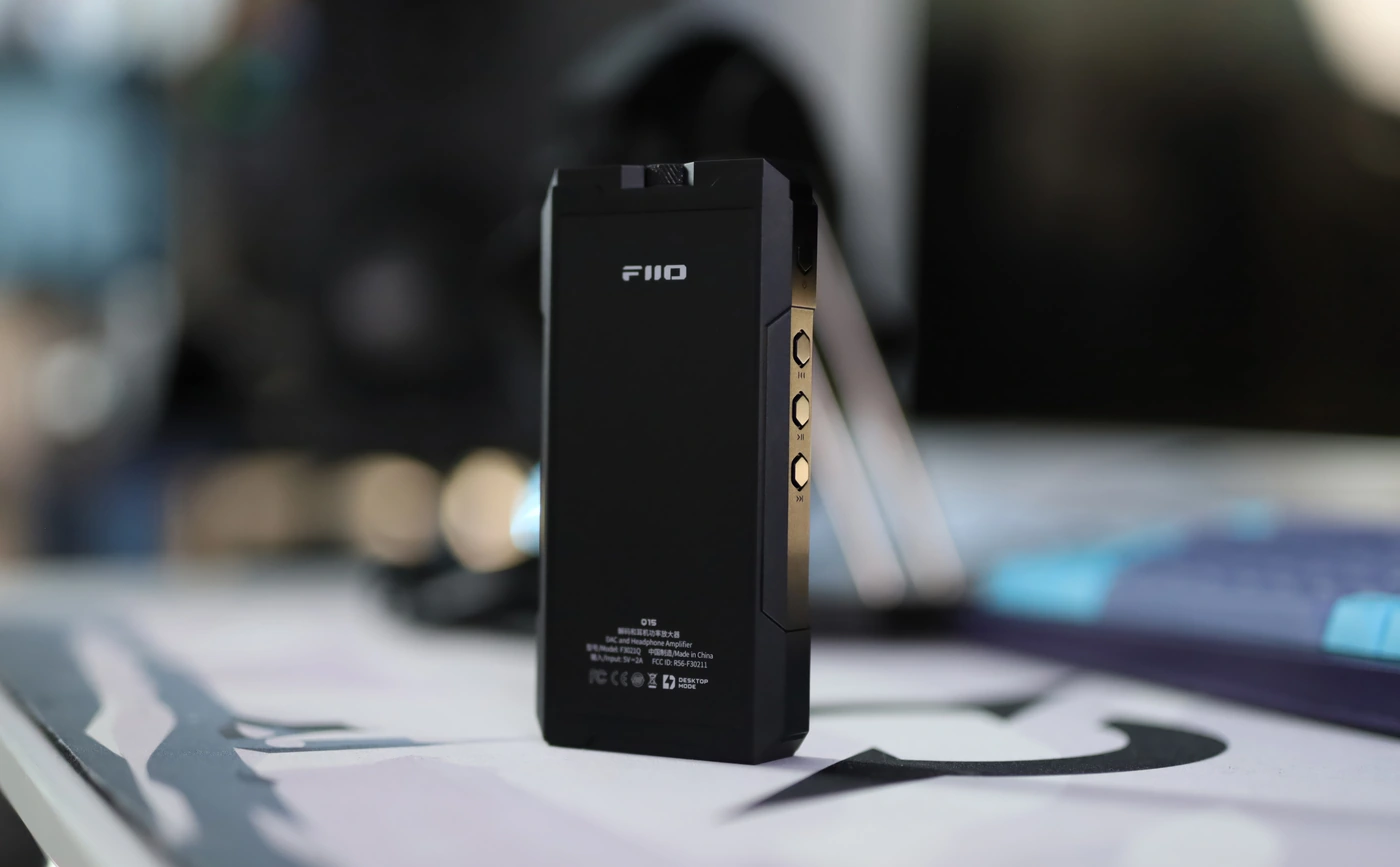
In actual usage, I first tested Q15 for DAC delay, and there is absolutely none, which is nice, you can play games in real time, listen to music, watch movies, everything happens instantly with it. The first time you wake up the Q15, a second of the first song / sound being played is cut, but as you keep listening to music, it does not go to sleep. It takes Q15 around 30 seconds to go to sleep again, so this happens when you’re pausing it for a while, but won’t happen if you play songs continuously, or even if you have short pauses. With sensitive IEMs you can hear a bit of a pop sound when that happens, but it is a faint effect. With smartphones, it works with Samsung S23 Ultra with no issues, Bluetooth works with no issues, and while walking around Bucharest I had zero dropouts for a 4-hour walk. You can use the buttons on the side to control playback both in USB DAC mode and in the Bluetooth mode. The battery life has never been a problem for me, although when I first received the unit, it was with the very first beta firmware, which had some bugs. It is a good idea to update the firmware to the latest version to get rid of bugs and to have a proper experience with Q15.
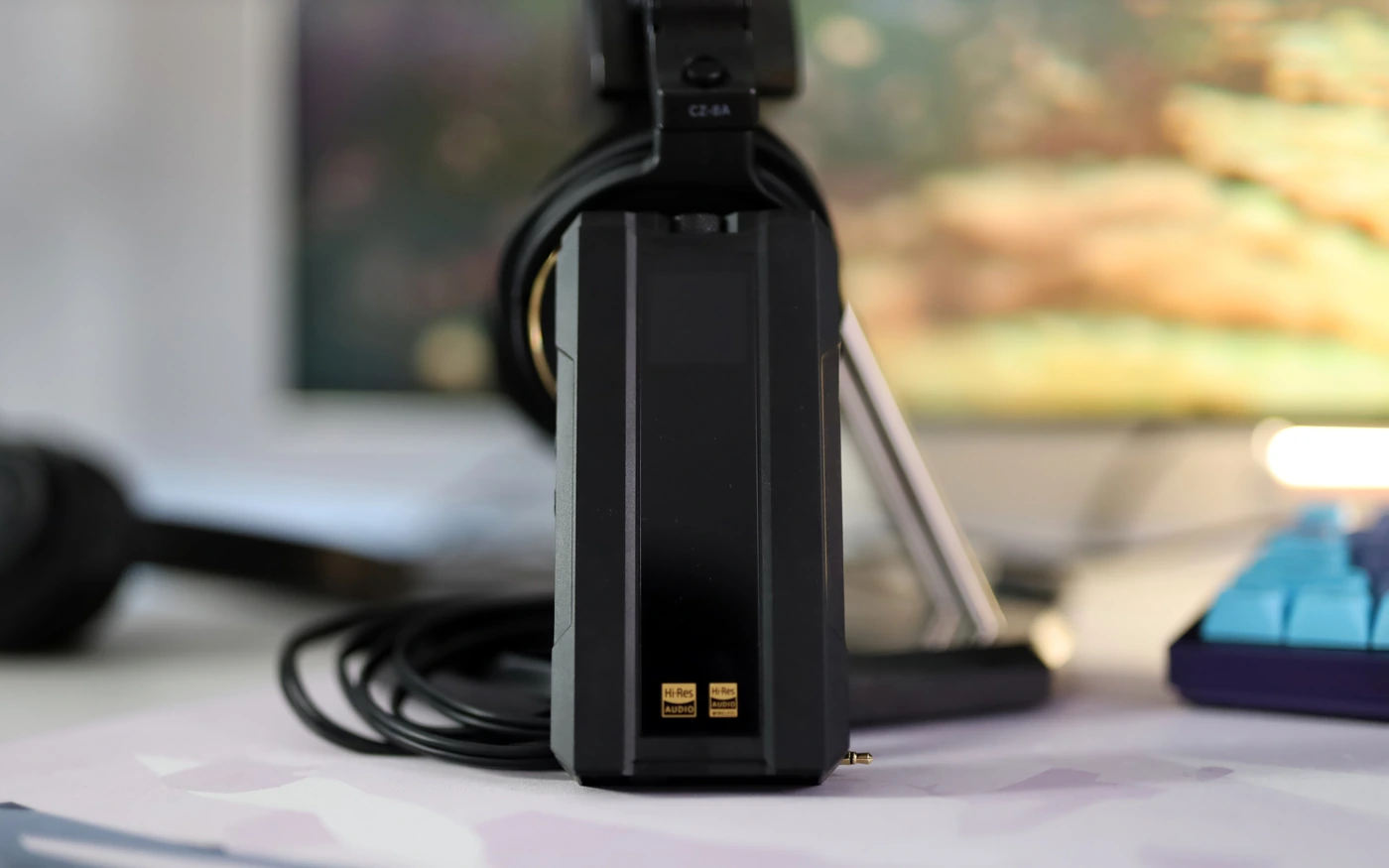
As FiiO Q15 is mainly a DAC/AMP designed to drive headphones, that is how I’ve been using it, and the main headphones I paired with it are Spirit Torino Twin Pulse Beryllium, YanYin Canon II, FiiO FH11, Soundz Avant, ThieAudio Hype2, Sennheiser Ie900, Letshuoer Cadenza 12, Kiwi Ears Quintet, Sennheiser Hd 660S2, Meze 109 PRO, HarmonicDyne Zeus Elite, HIFIMAN Audivina, and HIFIMAN HE1000SE. FiiO Q15 can safely drive each and every single one of those headphones, and even with HE1000SE, the sound you’re getting is vibrant, vivid, and dynamic, with a lot of headroom. In fact, in the Super High Gain Mode, I can’t go beyond 85 volume on Q15, and only because the sound already gets too loud for me.
Sound Quality
FiiO Q15 generally sounds open, clean, vivid, dynamic, engaging and punchy. It is a DAC/AMP with a heart, and hearing it now, versus the original Q5S I can understand how much FiiO improved as a company, the sound of Q15 is not just detailed, it is natural, the timbre and tonality is spot-on for both acoustic and electronic music, Q15 is a rare case where the improvements from one generation to the next far exceed all expectations, while prices are kept basically the same. FiiO Q15 can project the sound far out of your head, even with IEMs, if they aren’t particularly intimate and narrow in sound, but it doesn’t force anything to sound scattered or too wide, it just allows this characteristic to shine unconstrained when it is part of the IEM / Headphones signature, as we’d see with HIFIMAN HE1000SE, or IEMs like Sennheiser IE900.
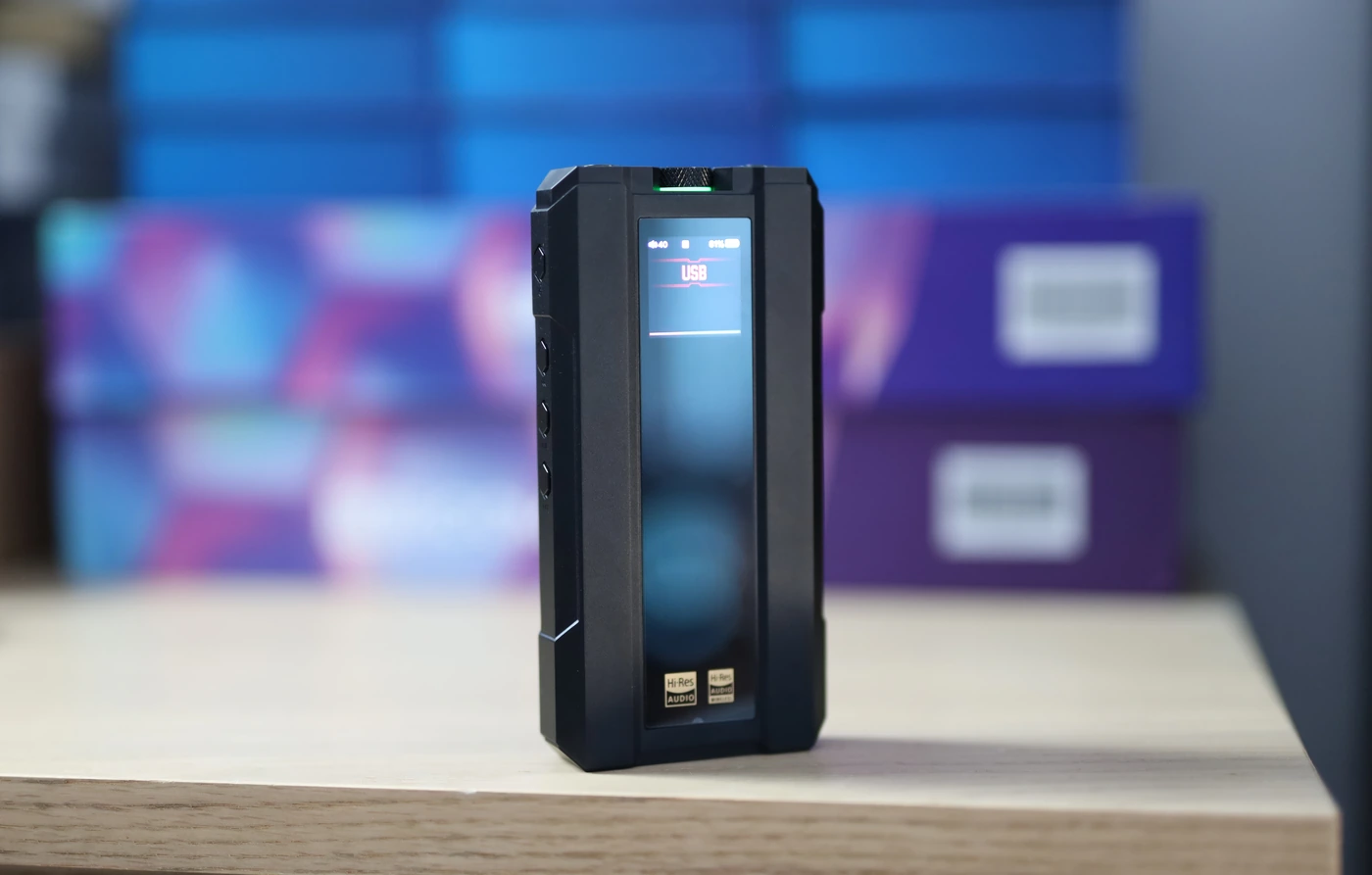
Starting from the bottom, the bass of Q15 is natural in speed, so we have that pleasing natural traisnet response, where it can produce both the slower, finer nuances and heavy movements of strings in jazz, but also present you the bass guitars playing shyly in the background in Alesana’s emo songs. Q15 is great at persevering the bottom end extension and presence for all music, and this becomes noticeable much more with headphones that aren’t driven well by most sources, like HIFIMAN HE1000SE, or with IEMs which most sources can struggle to control, like Spirit Torino Twin Pulse and Soundz Avant. The bass does not bleed into the midrange, and it keeps a fairly natural, linear amount, although the sub-bass seems to be more present on Q15 than other sources. This effect is thanks to its high driving power, which allows Q15 to actually present that sub-bass extension, while most sources roll it off due to limited driving ability.
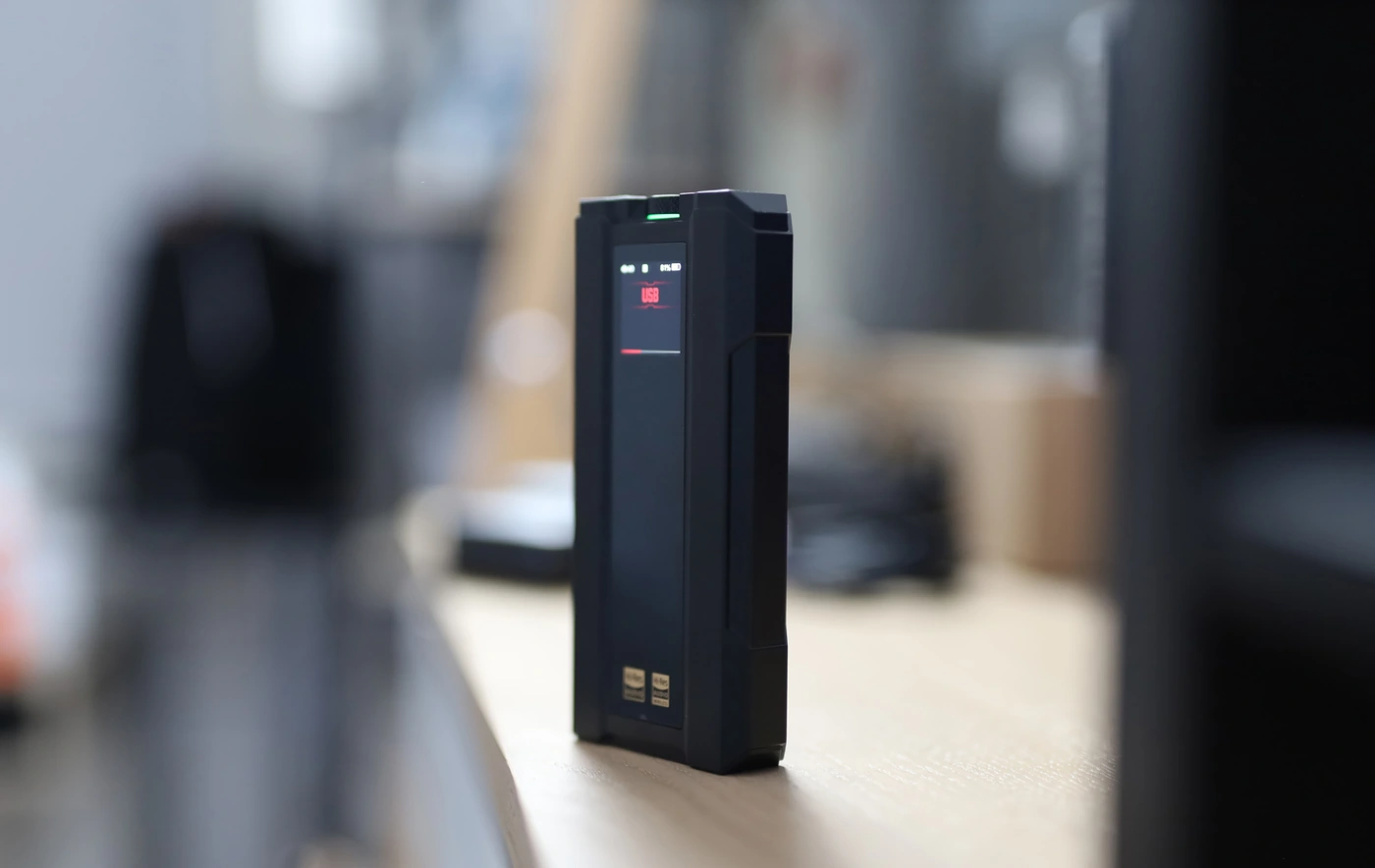
FiiO Q15 handles dynamics well, and has a high room, so it is equally enjoyable at all volume levels, having a crisp, sharp and clean presentation at low volumes, a vivid, clear and organic presentation at medium volumes, and a sharp, lively, forward and crisp presentation at high volumes. Regardless of the volume, you can’t hear background noise, distortion or any kind of errors in the sound. Q15 being capable of reproducing the dynamic range regardless of how loud you’re listening. The soundstage remains wide, holographic, deep and instrument separation is excellent at all volume levels, Q15 being able to hold character and definition even if you’re pushing its boundaries, although I have noticed that it sounds better at low gain levels, so I would avoid using super high gain, and high gain if the volume is enough at lower levels. The sound is exactly the same regardless of whether you’re using Desktop mode, Phone mode, or if you’re charging in Q15 while using it, the analog amplification part is well isolated from the battery parts and from the digital decoding parts.
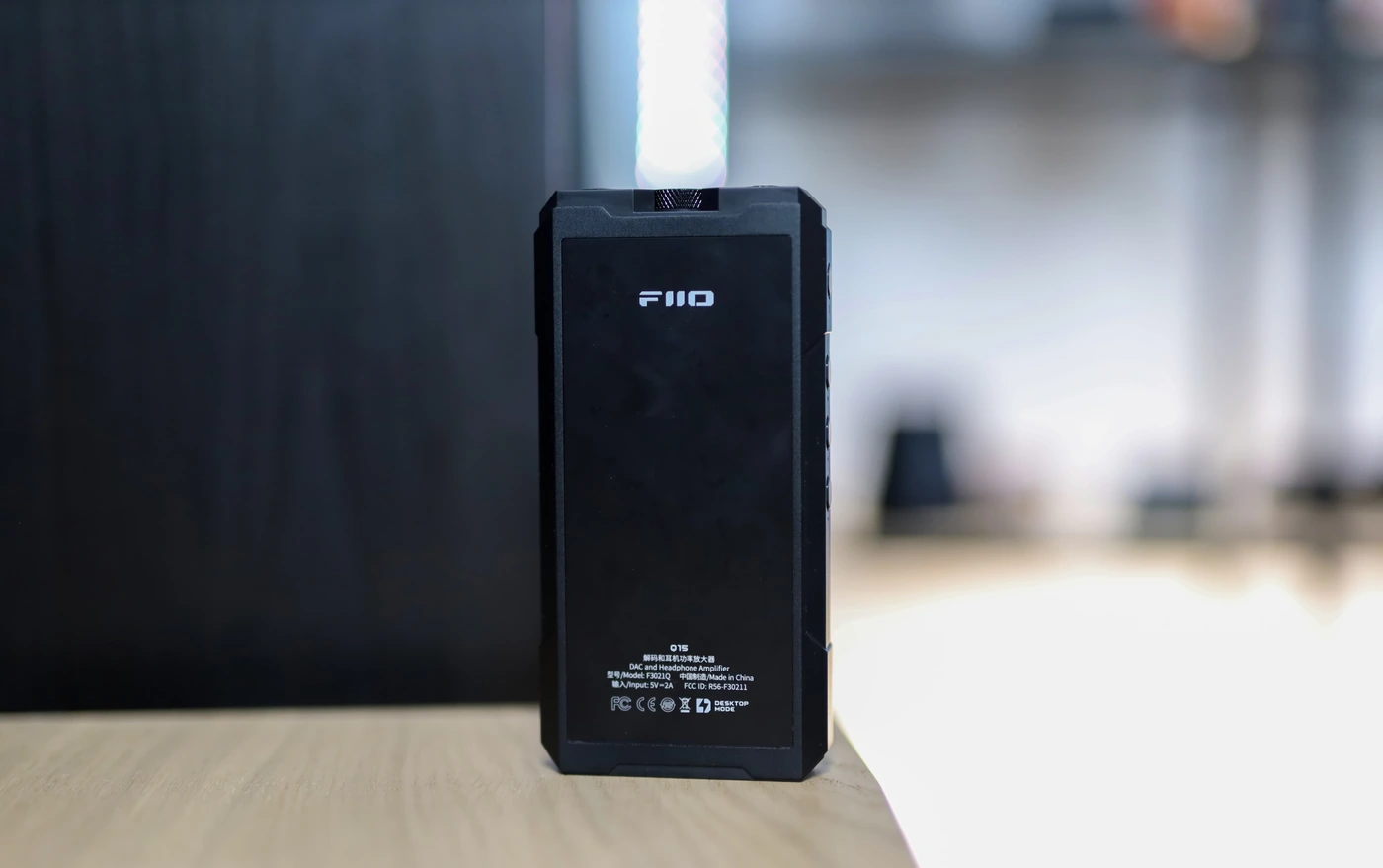
The midrange is where the magic really happens though, as Q15 has a musical presentation, with excellent instrument separation, to the point where even in songs like Alesana – The Thespian, I am hearing multiple guitar layers around 1:30, Q15 presenting the rhythm and lead guitars well defined, both separate from each other, showing exactly how clean and yet organic it can sound. The transient response is natural, Q15 is quick, snappy, but keeps an organic, fatigue-free response to each impulse, resulting in a faithful, accurate reproduction of guitars, making emo and post-hardcore music really enjoyable. Both male and female voices are presented equally well, so you can expect to hear both James Hetfield and Takanashi Kiara as if they were both singing in person, right in front of you. FiiO Q15 tends to present far more information in the soundstage than you’d expect, even with IEMs projecting music far away from you, for songs that can be played as such. For example, Asking Alexandria – When Everyday’s Weekend is playing around me like I’m in a club, the deep bass notes are distant, but fill up the entire soundscape, the guitars are present right up in my ears, while both lead and background voices are played frontally, but not intimately right in my face, while I am using IEMs. There is an ever so slight hint of warmth in the midrange, which brings a bit of extra juice and play to each musical note, keeping things cohesive and well integrated together.
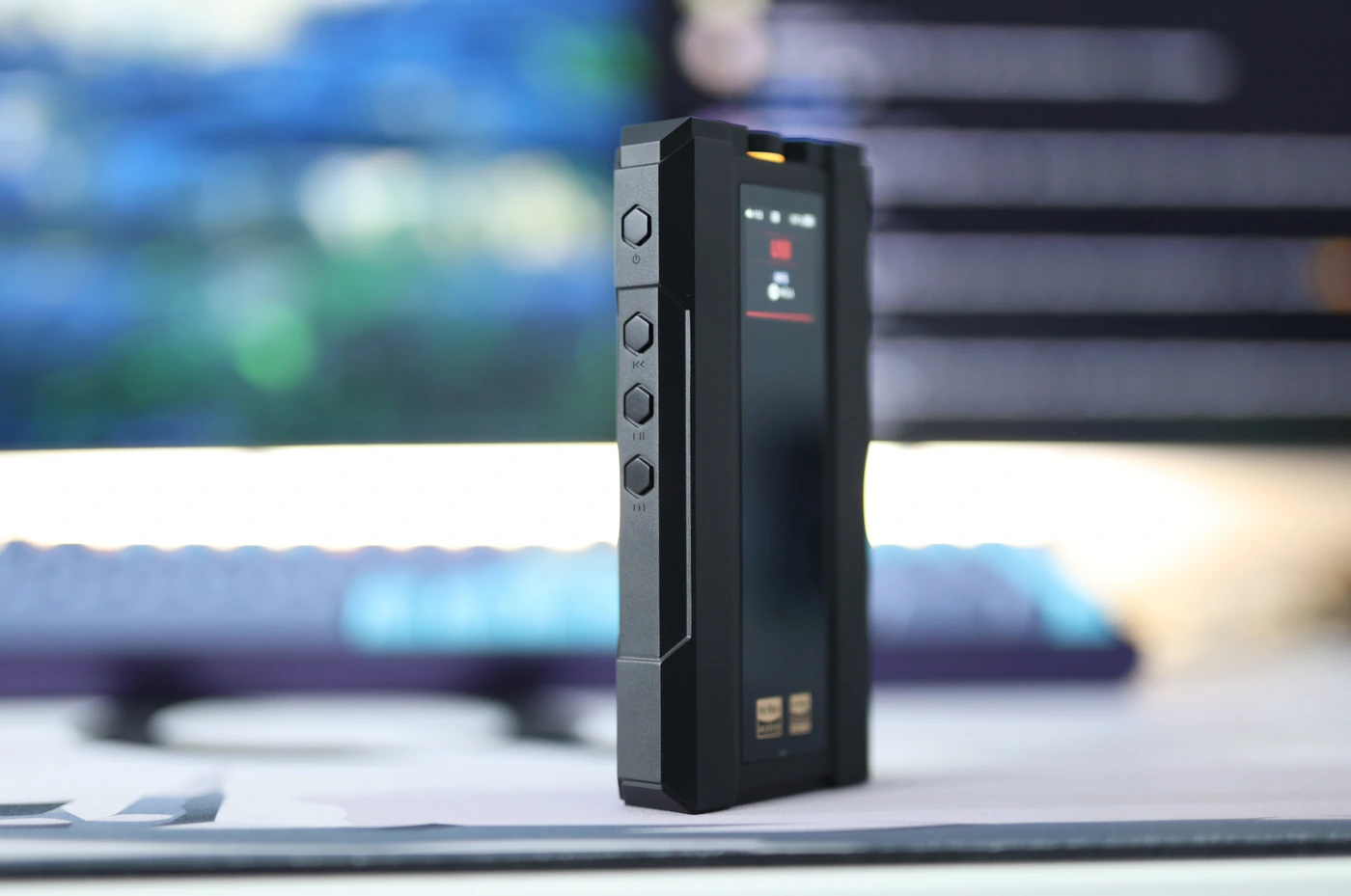
FiiO always was split about the treble, some of their products being bright and brilliant, while other products being silky smooth and softly rolled off, always ending up with a strong character for their products. FiiO Q15 falls in the natural, but brilliant category, with a hint of smoothness in the edgier parts of the treble. This means that you can expect cymbal crashes to be energetic, instruments to have high-end definition and clarity, but at the same time I couldn’t hear harshness or sibilance, even with Infant Annihilator or Leningrad, both of which are bands where the mastering exaggerated the upper midrange and lower treble considerably. With Yfu Baby – XTA-Z, every little inflexion in Yfu’s voice is presented clearly, we get a complete extension in the treble, with her voice being as sharp, vivid and crystalline as it should be, separated front he groovy bass lines in the background and the special effects. To test the limits of FiiO Q15, I also put on some Lucrecia – Sleeping Slaves Of Fate, where Q15 handles both the sharp screamo voices, and the sweet, smooth female voices, while cymbals are played loudly, sharply, but in the background, with guitars being sharp and clean with no added overdrive or distortion, beyond what the natural sound of the band should be. In the end, the sound is perfectly balanced, natural, lively, engaging, vivid and clean.
Comparisons
FiiO Q15 vs Shanling H5 (399 USD vs 369 USD)
I always pick the first comparison to be the most challenging, but H5 is one of the most popular DAC/AMPs at the moment, and Q15 comes to take its crown, adding a bit to the price, but having similar features, so why would you pick one over the other. The shape and design language is caustically different, with H5 looking smooth, modern, elegant and resembling the experience you get in an apple store, while Q15 looks imposing, industrial, edgy and clean-cut, having almost like a gothic building element to it. The usage experience is similar, although H5 has a tiny microSD slot at the back which allows you to use it like a shuffle DAP, and play some music from a local storage. Using two wheels for H5 is more confusing and in practice, Q15 nails down the user interface better, although Q15 is a bit heavier and larger in person. Both are scratch free after weeks of usage, and I would expect both to stay this way. We have a professional RCA line out on Shanling H5, for desktop users, but it lacks a coaxial input which is present on Q15. Both have separate charging and data ports, although Q15 can get even higher driving power in desktop mode, and it is better at Bluetooth stability. The battery of Q15 is significantly larger, at 5500mAg versus the 3500mAh for Shanling H5. The maximum driving power of Q15 is significantly higher than that of H5, almost double, and it distorts less at max volumes, while H5 can actually run into overdrive mode if you try to push it to the max, while Q15 didn’t exhibit this, and I was unable to find a headphone hard to drive enough in my inventory to deplete the driving ability of Q15.
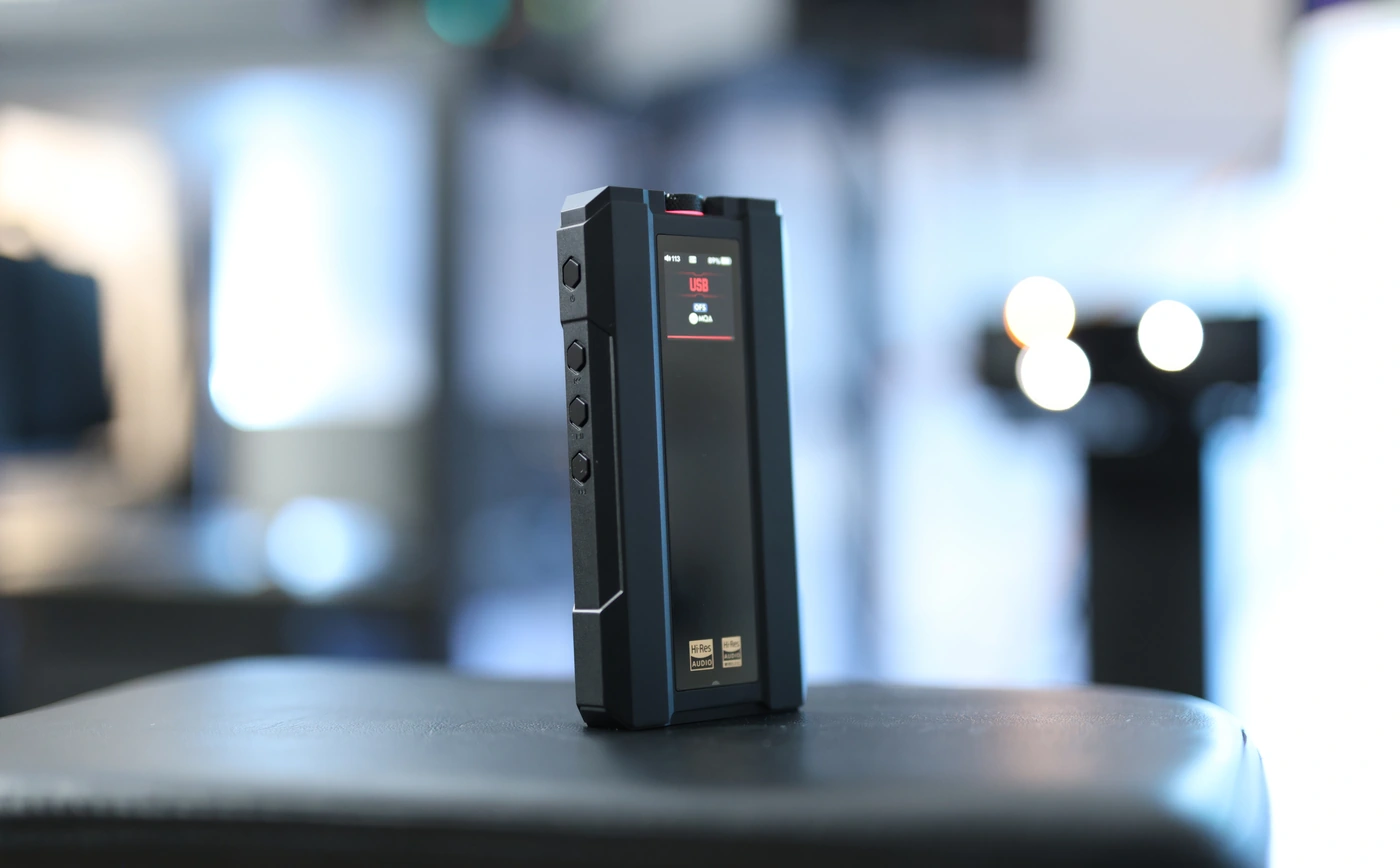
Sonically, the two DAC/AMPs are quite different, and Shanling H5 sounds thick, smooth, with a silky, softly rolled off treble, while FiiO q15 sounds deep, clean, with better detail, better resolution, improved dynamics, a punchier, more organic sound, and with a wider, more holographic soundstage, better instrument separation and better imaging. Shanling H5 can be quite intimate at times, pushing you in a close space with the lead singers, while Q15 resembles a concert experience better, allowing you to take a step back and enjoy the scenery, hear more instruments and space between them, and project music out of the confines of your head better. If the IEMs are very sensitive both DAC/AMPs can have a bit of background hiss, but it will not be noticeable with most IEMs and they are about equal. I would grab H5 if you didn’t need a higher driving power, and if you prefer the smoother design, and the smoother, bassier sound with more low-end thickness and substance, and I would grab FiiO Q15 if for its improved resolution, more natural sound, better treble extension, sparkle and tighter sound with a faster transient response.
FiiO Q15 vs iFi Audio Go Bar (399 USD vs 329 USD)
While it may seem unfair to compare a full unit like Q15 to iFi Go Bar, we have to take into account that if you’re buying something right now, they are close in price, so it is good to start by mentioning that Q15 has better versatility, more inputs, it has a battery inside and will not drain your smartphone, while Go bar feeds on your phone’s battery like a bar of chocolate. Go Bar has a much smaller and lighter design, but you can use Q15 via Bluetooth, effectively making it an awesome wireless DAC/AMP, while Go Bar will always be wired to the source to produce sound. The hissing with IEMs is lower with iFi Go Bar, as Q15 has a higher output impedance, but Q15 has a considerably higher driving power for hard to drive headphones, more control and better bass impact, plus lower distortion at maximum volume, while Go Bar will struggle if the headphones are out of its reach.
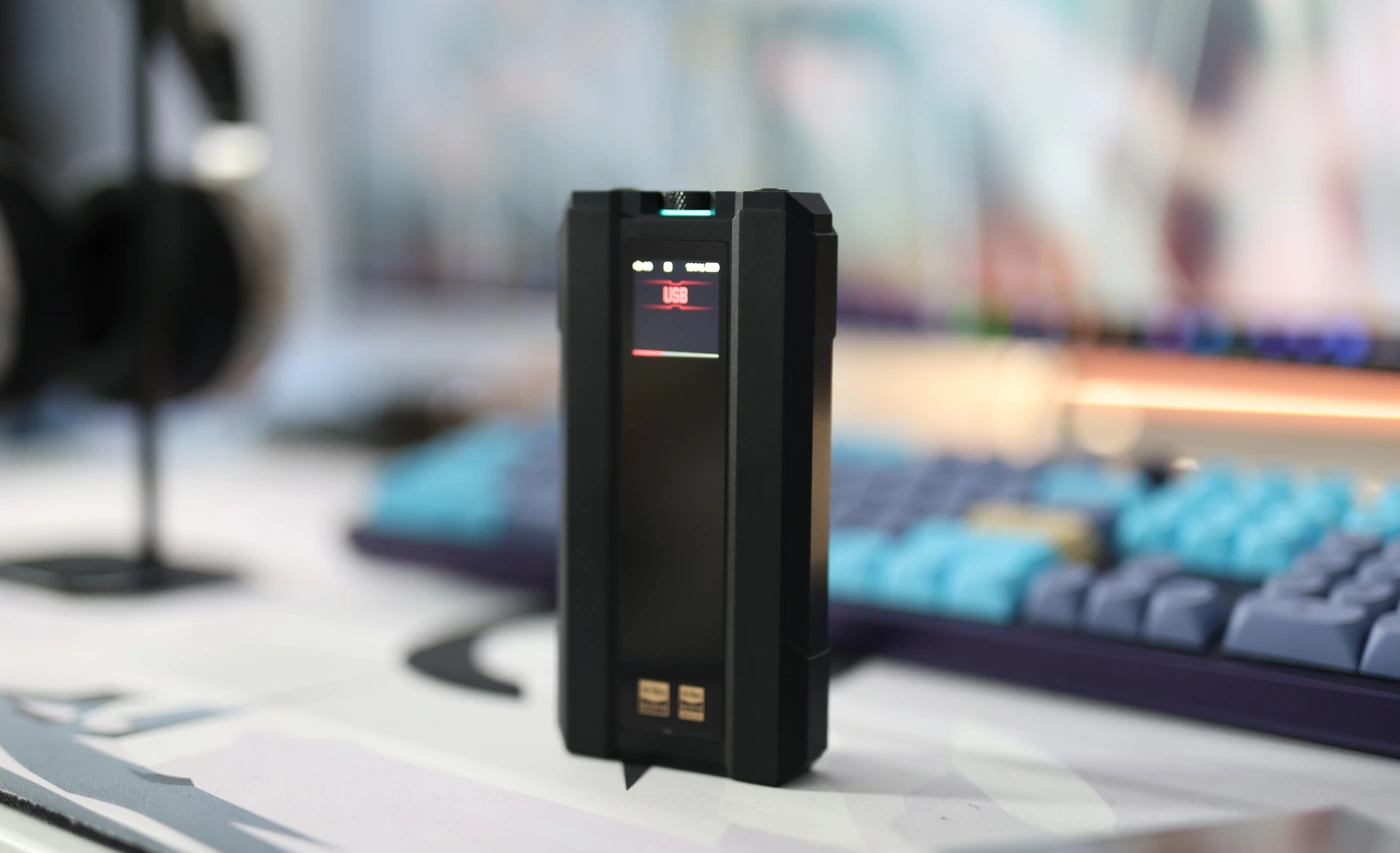
Both units have a crisp sound, but Q15 sounds deeper, fuller, more controlled and has generally a wider, more holographic soundstage. iFi Go Bar sounds a bit brighter, it has more width in the soundstage, but less depth, and while both have a good imaging and stereo separation. iFi Go Bar has a faster transient response and can sound dry, while Q15 has a more natural traisnet response, and will sound more natural, textures being revealed but not harsh, while with Go Bar, it can have more WoW effect at first, but over time can get a bit more fatiguing. Given the difference in pricing, I would go with iFi Go Bar if I wanted something smaller, and didn’t mind the wires, but I would go with Q15 for improved driving power, improved sonic quality, and better perceived value for the purchase.
FiiO Q15 vs FiiO Q5s (399 USD vs 350 USD)
Here we see how much FiiO has improved as a company, and how much better the new products are compared to the previous line, as Q15 has a much better design language, better headphone output support, and although FiiO stopped using the modular amplifiers like the one we’ve seen with Q5s and FiiO X7 MKII, the sound of Q15 is far better than the one of Q5s. The device itself is more solid, we have the volume wheel at the top, headphone outputs at the top and the Type-C port on the other side, all of which help for a better ergonomic. As Q15 has a better approach to the battery issue, having a desktop-only mode, it is better for those who want to be at the computer all day long, and not wear out the battery of their favorite DAC / AMP, and Q15 also has better stability for the Bluetooth connection, with far less dropouts than Q5s. I would call Q15 a better unit for portability, too, the newer Type-C USB port is big enough of a reason for me to fully replace the Q5s with the new Q15, as I can wire it to my smartphone for the best sonic quality, while with Q5s that wouldn’t be possible.
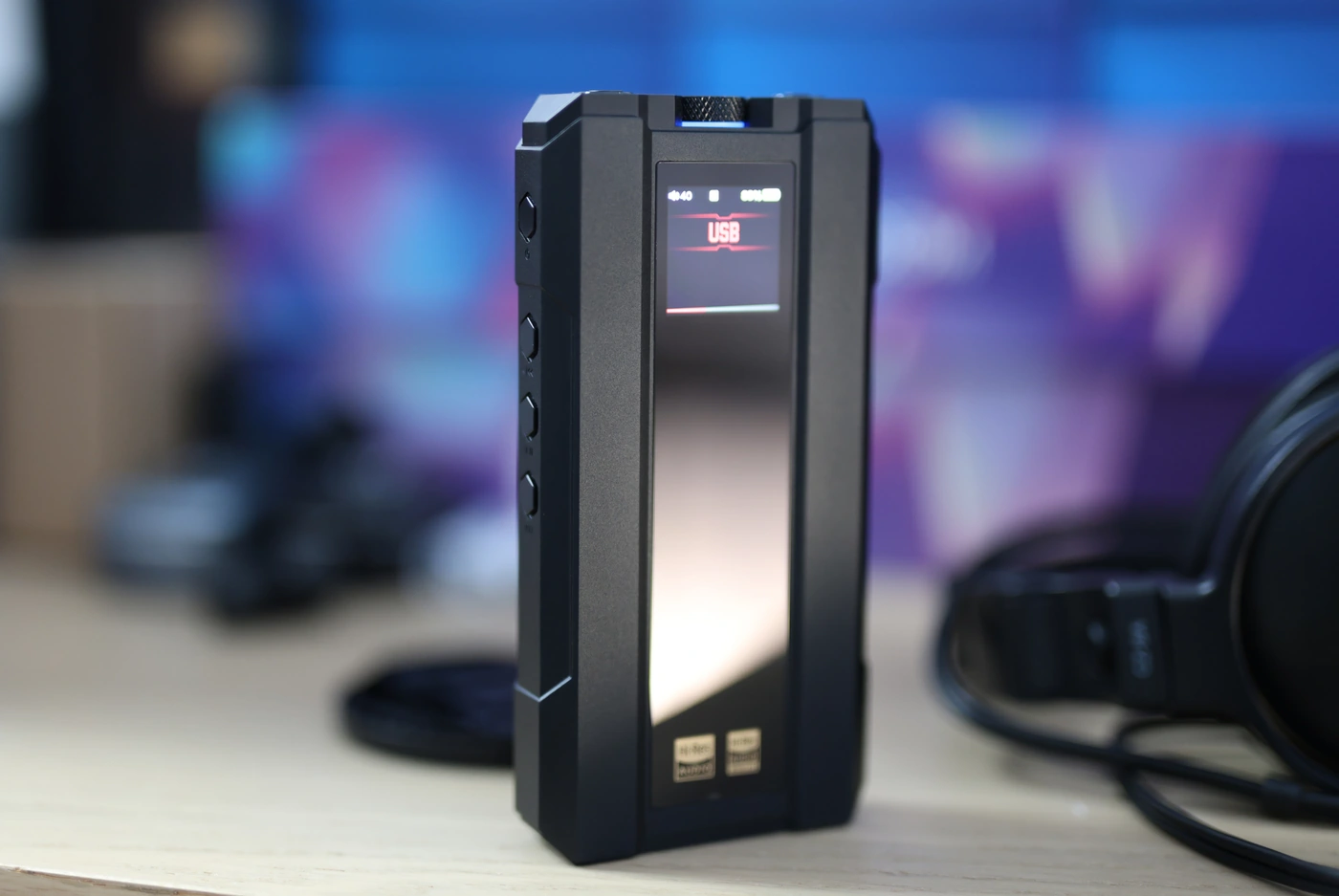
Sonically, Q5s was quite nice, but Q15 tops it in resolution, detail, clarity, precision, tightness of the bass, how punchy the whole sound is and in tonality too. Q5s sounds almost like it has a bit of digital glare, and although it is smoother and warmer than FiiO Q5, the unit it was based on, Q15 becomes far more natural in the textures, where it reveals more, but stays more natural, it sounds more musical, more fluid, without cutting on the clarity, and the background noise of the new Q15 is also lower, while it has a higher driving power. All in all, Q15 presents an improved, more mature, more refined sound compared to Q5s.
FiiO Q15 vs Palab M1 Mini (399 USD vs 500 USD)
Palab M1 Mini has a less versatile design than FiiO Q15, and to avoid the battery issues entirely, they don’t use a battery, and M1 Mini always feeds on current from the source. It does have two Type-C USB inputs, to isolate the power from data, but Q15 has far more features, including Bluetooth, a high-quality battery inside, both units can work as USB DACs with no delay, and both units are similar in shape, although Q15 is bigger, and heavier than M1 Mini. The noise levels are lower on Q15 for IEMs and headphones. Since the M1 Mini has a high driving power, and needs power on the tap, you can’t really use it with smartphones, so the whole point of it being portable is lost in the process, and it is mainly a desktop DAC / AMP you can transport. You can expect a higher driving power from Q15, especially for hard to drive headphones, both low SPL and high impedance ones.
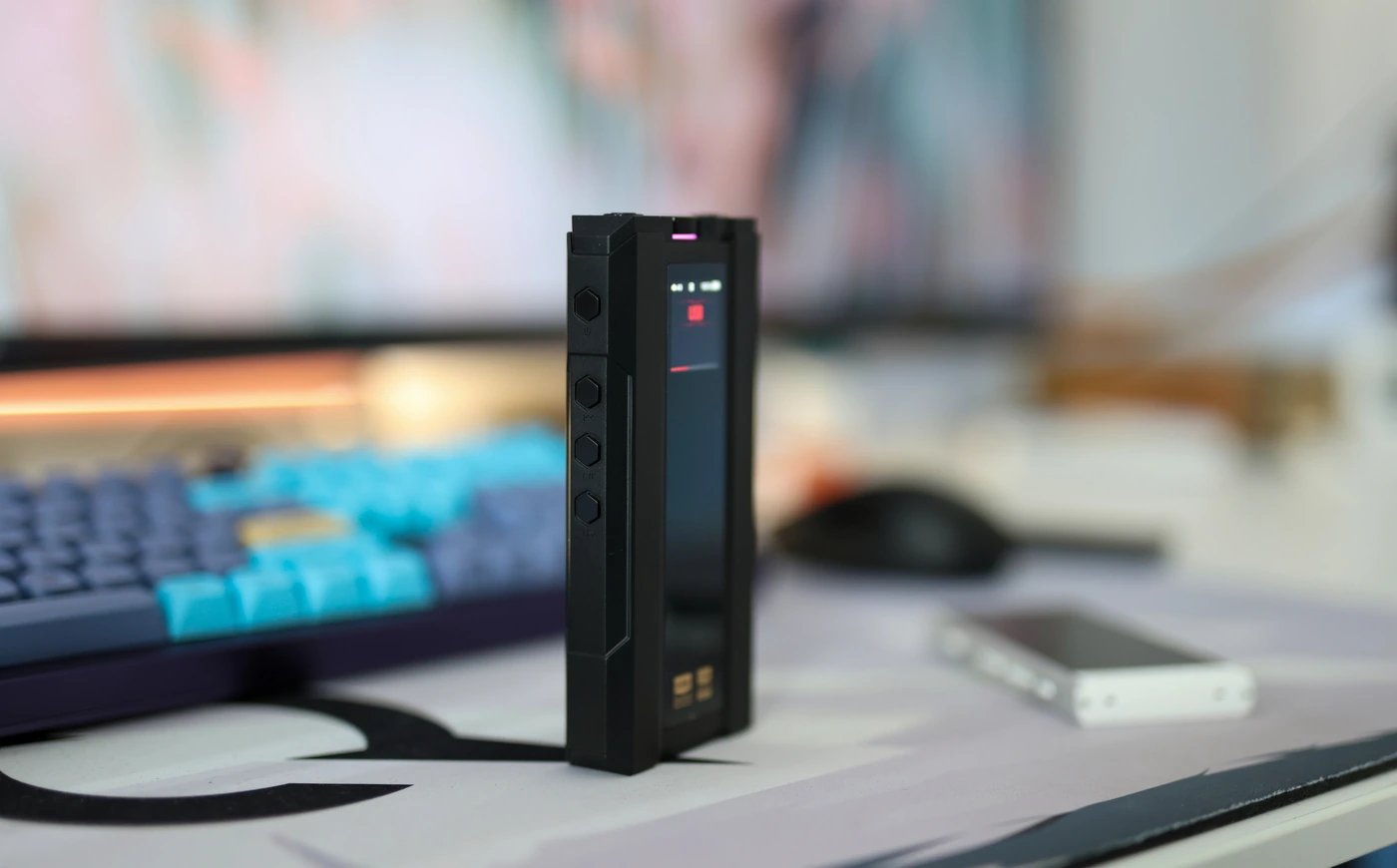
Sonically, they are rather different, with the M1 Mini sounding fuller, deeper and more lush, with a far smoother treble and less sharpness in the sound, more focus on the details and resolution in the midrange, and much less focus on high-end details and air. FiiO Q15 sounds far more balanced, it has lower bass amounts, but a tighter, punchier bass, the midrange is more natural, sweeter and sounds more organic, more vivid, and the treble is brighter, airier, with better extension and sparkle. Between the two, I would go with Q15 in general, although if you know you really want a warmer, thicker, lusher sound with more bass quantity and a smoother treble, M1 Mini offers that more, while Q15 offers improved attack, resolution, a faster transient response, being more versatile in general.
Value and Conclusion
With a price point of just 399 USD, FiiO Q15 can effectively replace multiple devices, including a large DAC, a headphone amplifier, and it can still provide the dynamics, control and driving power to drive HIFIMAN HE1000SE more than fine, perfectly well. Not only this, but it has delicacy and nuance for all music styles, and a really engaging, punchy sound.
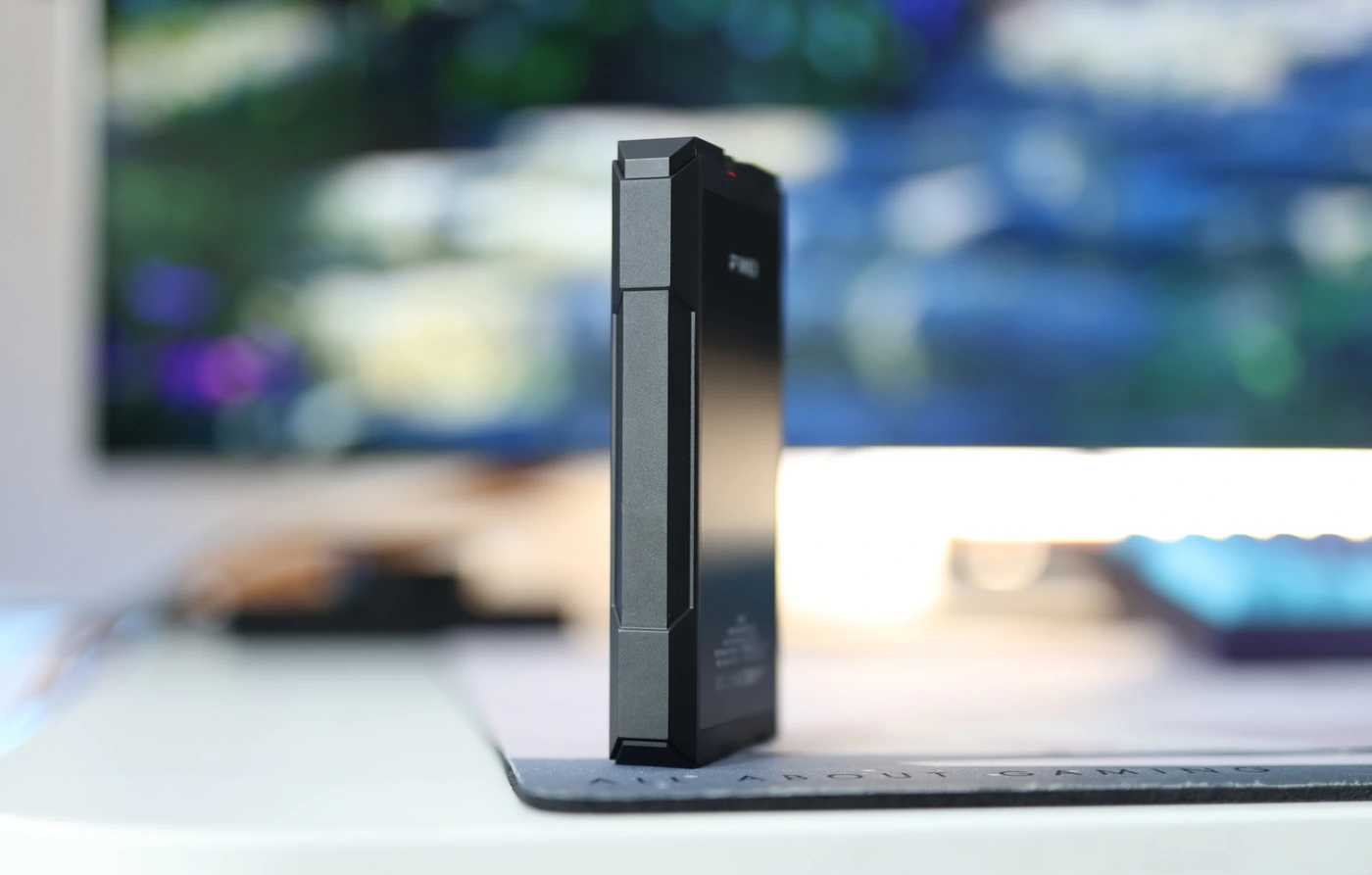
In fact, FiiO Q15 is so good that before the end of today’s written review I will be adding it to the Audiophile-Heaven Hall Of Fame, as one of the best sounding portable DAC/AMPs, and especially for the price point, offering tech that we always wanted. It feels like Q15 has it all, LDAC Bluetooth, a Desktop Mode, two Type-C inputs, for a separate power input, it has enough driving power to move any headphone, and two headphone outputs with no background noise, being literally the ideal DAC/AMP right now.
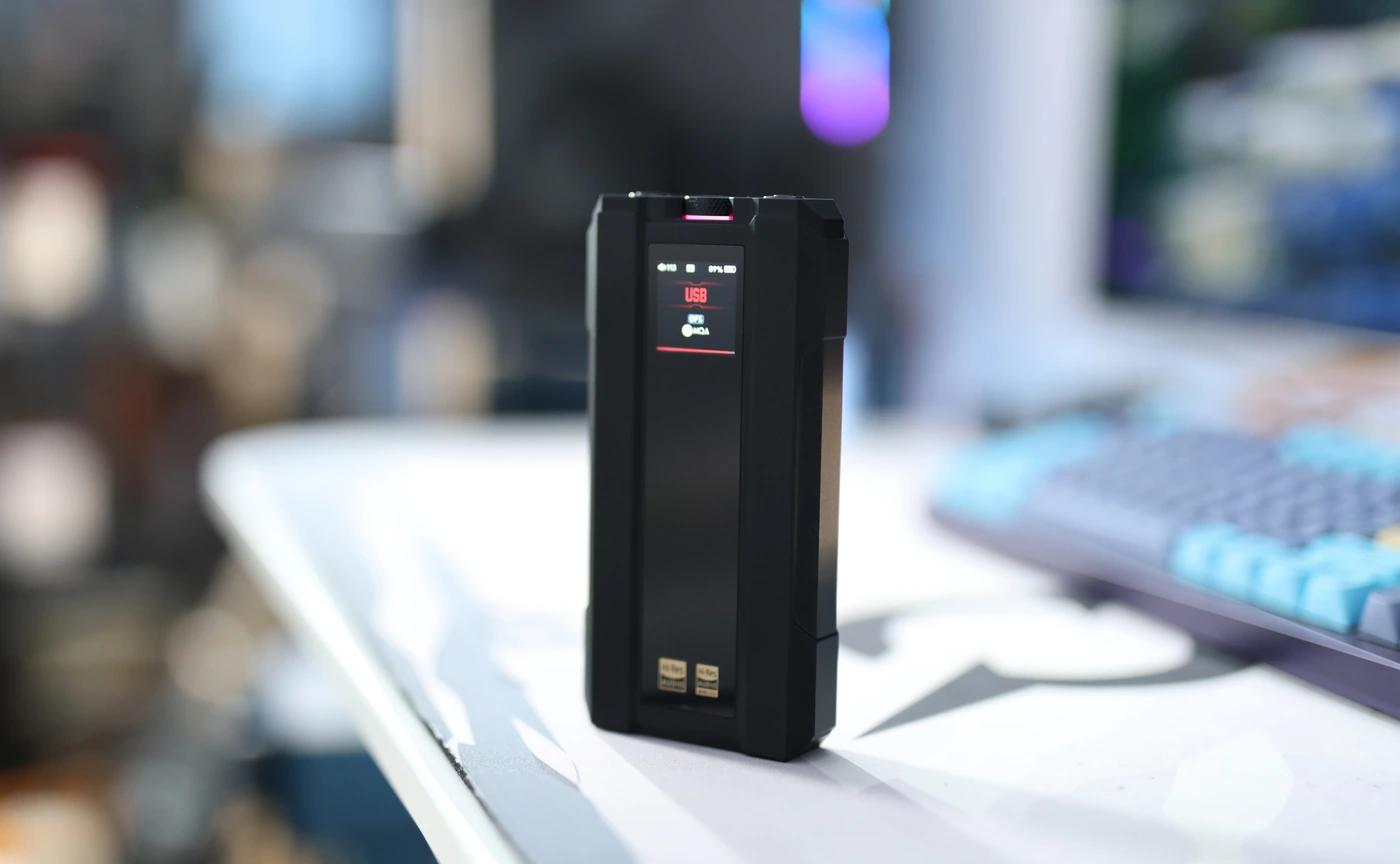
At the end of the day, if you need one device that does it all, like iFi’s iDSD Black Label did in the past, but with a much more ergonomic shape and design, with a better portability, and one unit to rule all your headphones, and to take you to music heaven, FiiO Q15 is a fully recommended purchase and a DAC/AMP you will have a lot of fun with.
Product Link
You can grab one from www.amazon.com here – https://amzn.to/4bOWj9m
If you’re in the UK, you can grab one from www.amazon.co.uk here – https://amzn.to/4bJufnY
And if you’re from Europe, you can grab one from www.amazon.de here – https://amzn.to/4bGg8jr
--- Please remember to stay safe, and always have fun while listening to music!---
- If you have a dime to spare, please donate, and help us! It would make the day brighter for me and my wife-
Full Playlist used for this review
We listened to more songs than those named in this playlist, but those are excellent for identifying a sonic signature. I recommend trying most of the songs from this playlist, especially if you’re searching for new music! The playlists are different for Spotify, Tidal and Youtube, and based on the songs I enjoy and are available on each!
https://www.youtube.com/playlist?list=PL_cjBXGmwSHSdGcwuc_bKbBDGHL4QvYBu
https://open.spotify.com/playlist/5J3oloz8Riy9LxEGenOjQ0?si=979ba4f082414be7
https://tidal.com/browse/playlist/330fd544-8e5b-4839-bd35-676b2edbb3d5
--- Contact Us ---





